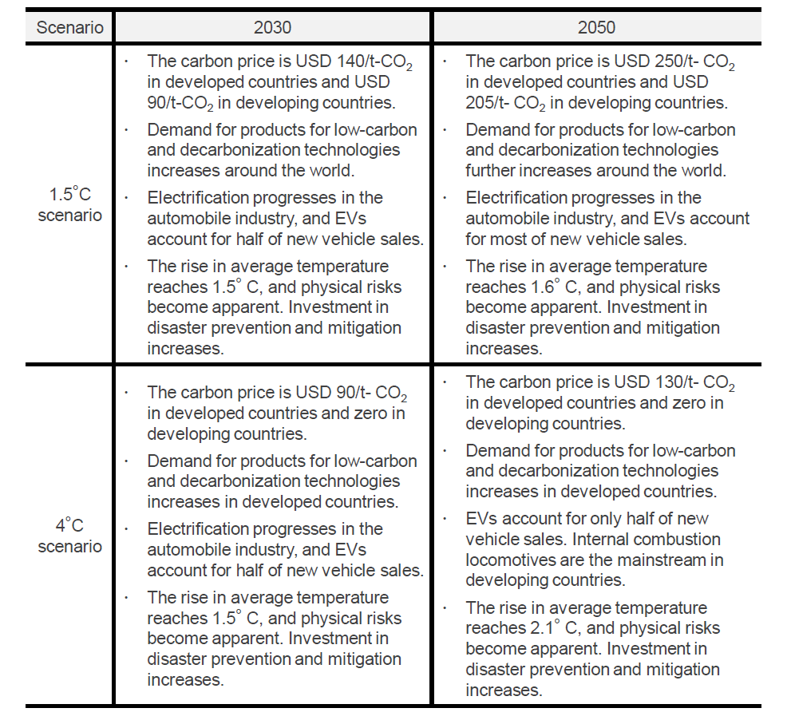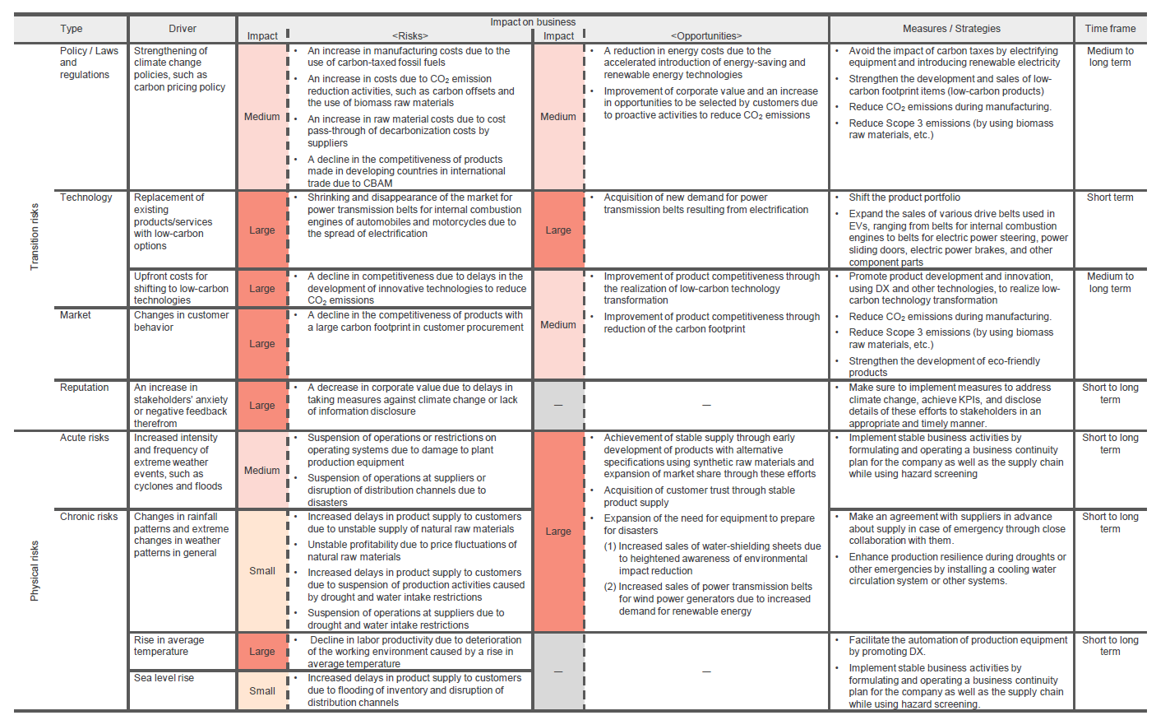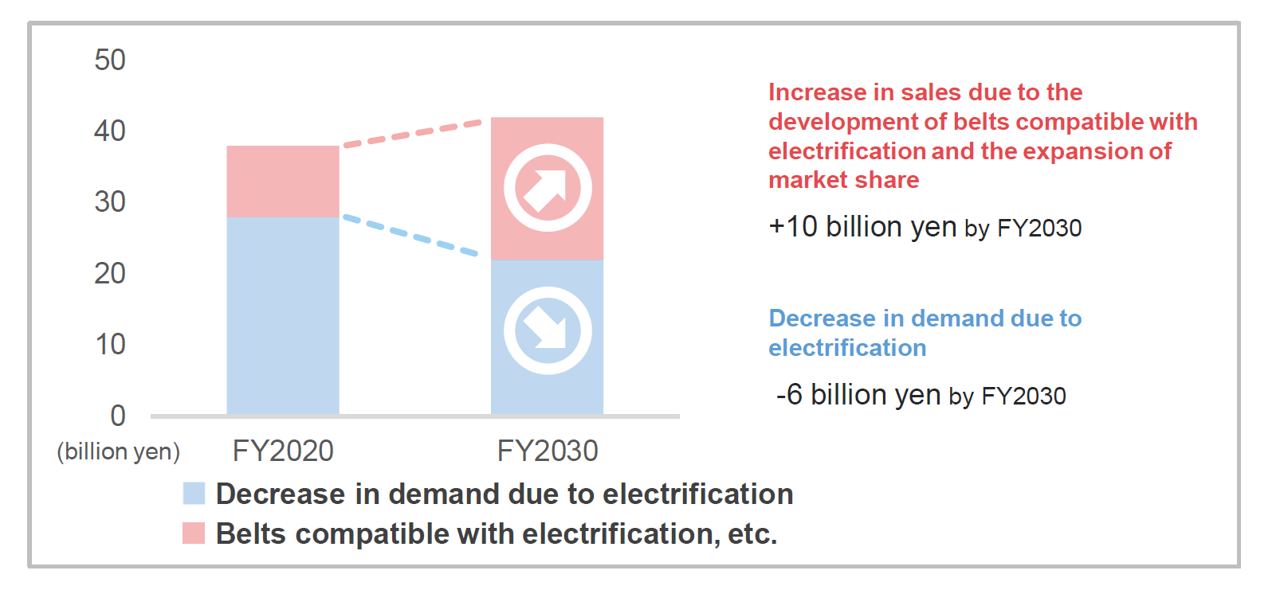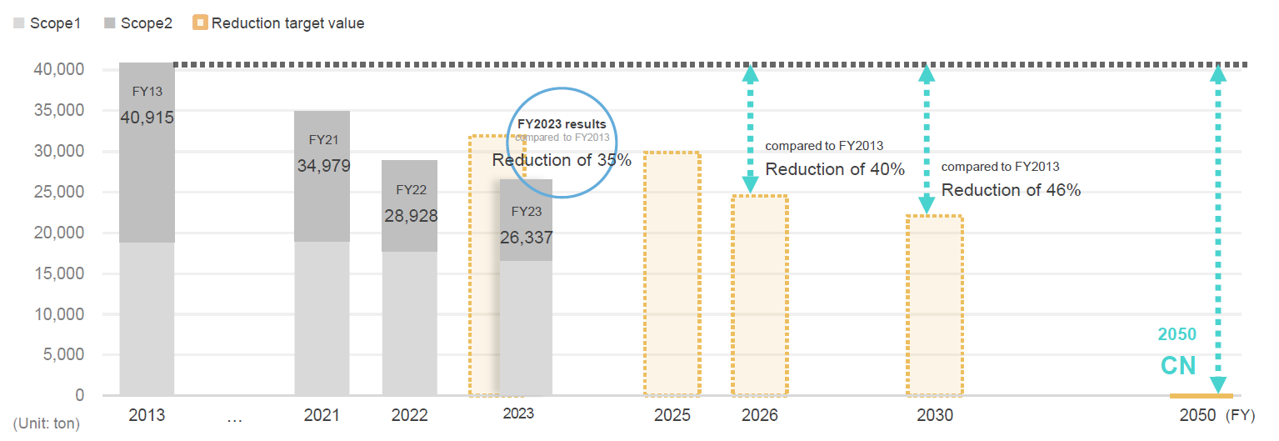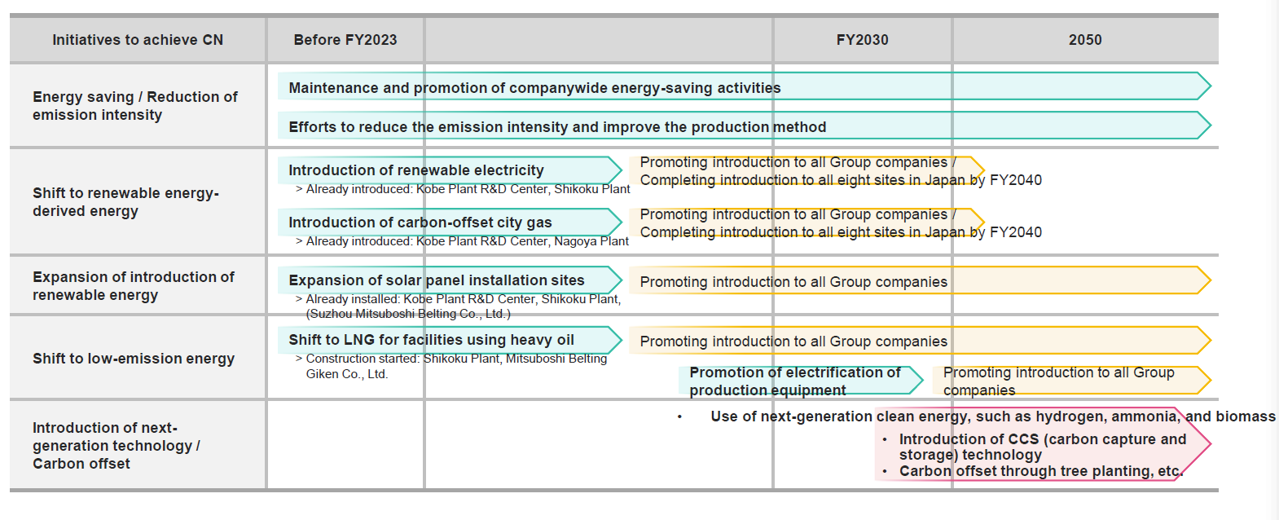Environment
Initiatives Related to Climate Change
Basic approach
As alarm bells have been ringing over global warming caused by greenhouse gases, countries around the world are committing to greenhouse gas emission reduction targets and working to reduce their emissions. In the meantime, various climate disasters caused by global warming are occurring all over the world, and their frequency and intensity are increasing year by year, bringing about a critical situation not only for human lives but also for the survival of society and the environment, which are the very foundations of our corporate activities.
Under these circumstances, supporting the Paris Agreement adopted at COP21, as well as Japan’s climaterelated laws and regulations, such as the Act on Rationalizing Energy Use (Energy Conservation Act) and the Act on Promotion of Global Warming Countermeasures (Global Warming Countermeasures Act), the Mitsuboshi Belting Group has taken up “contribution to the realization of a decarbonized society” as a key management issue (materiality), for which it has set specific measures and KPIs, and has been implementing various activities, including CO2 emissions reduction, energy-saving, and development of ecofriendly products.
Disclosure based on the TCFD Recommendations
In December 2022, Mitsuboshi Belting announced its support for the recommendations of the Task Force on Climate-related Financial Disclosures (TCFD) and joined the TCFD Consortium, a forum for discussion among supporting companies and financial institutions. This section explains the Group’s climate change initiatives in line with the TCFD’s four recommended disclosure pillars: governance, risk management, strategy, and metrics and targets.
Governance
At Mitsuboshi Belting, the Board of Directors makes decisions on and supervises climate change-related risks and opportunities as a management priority. Climate change-related risks and opportunities are discussed by the Sustainability Promotion Committee and reported to the Board of Directors, which then conducts decision-making and supervision based on the reports from the Committee.
“Reduction of GHG emissions,” “Water resource conservation,” and “Environmental conservation” have been set as sub-material issues (submateriality) related to the “environment.” The Sustainability Promotion Committee discusses and deliberates on the progress of activities of the organizations (business departments, committees, or working groups) in charge of the measures determined for each issue, thereby ensuring continuous improvement of activities.
Risk management
The Mitsuboshi Belting Group has established the Risk Management Committee to monitor and evaluate risk management activities for issues (significant risks) that should be addressed on a group-wide basis in terms of their impact on its business and to maintain and develop the risk management system.
For climate change-related risks, the implementation of the measures is monitored and evaluated by the Risk Management Committee in addition to the Sustainability Promotion Committee, and the monitoring and evaluation results are reported to the Board of Directors along with reports on other significant risks.
Strategy
With the aim of verifying the impact of climate change on the value chain of the Mitsuboshi Belting Group in the future and the effectiveness of climate change measures, we conducted scenario analysis based on two climate change scenarios: a 1.5℃ warming scenario, in which the trend toward decarbonization continues to grow and the impact of transition risks and opportunities increases, and a 4℃ warming scenario, in which climate change progresses significantly and the impact of physical risks increases.
Scenario analysis
1) Analysis target and preconditionsWith the electrification of automobiles, demand for power transmission belts for internal combustion engines is expected to decrease by approximately six billion yen by FY2030. Meanwhile, we expect an increase in sales of approximately 10 billion yen due to increased sales of timing belts for electric units (EPBs, EPSs, PSDs, etc.) in automobiles and belts for rear-wheel drives of electric motorcycles for the same period. Taking the progress of electrification of automobiles as an opportunity, we will strive to develop products that can achieve sustainable growth.
As a result of our ongoing efforts, such as installing solar power generation equipment at our offices/plants, switching to renewable electricity, and switching to fuel gas for heavy oil-fueled equipment, CO2 emissions in FY2023 were 26,337 tons (a 35.6% reduction compared to FY2013), far exceeding our target of “a 22% reduction in FY2023 compared to FY2013.”
We are working to reduce emissions not only in our own operations but also throughout our supply chain. In FY2023, the total emissions of the entire supply chain, including Scope 3, amounted to 148,489 tons. From FY2024 onwards, we will continue to implement our internal emissions reduction activities while at the same time working with our business partners to reduce greenhouse gas emissions, particularly Category 1 emissions, which account for a large proportion of Scope 3 emissions.
Details of Scope 3 emissions are available on our corporate website.
Metrics and targets
The Mitsuboshi Belting Group has identified “contribution to the realization of a decarbonized society” as one of its materiality, which is positioned as an important element in business activities, and has set long-term targets of reducing emissions by 22% by FY2023 and by 46% by FY2030 from the base year FY2013 and of achieving carbon neutrality by 2050 (boundary: eight sites in Japan, Scope 1 and 2). In FY2024, we set CO2 emission reduction targets for overseas sites, which we had not been able to set before, as well as a new interim target for FY2026. For FY2026, we have set a more ambitious target, as our reduction activities to date have progressed ahead of schedule compared to the previous plan.
With regard to one of our interim targets, “a 22% reduction by FY2023 (Scope 1 and 2 emissions from 8 sites in Japan),” we have achieved a significant 35% reduction against the target of a 22% reduction from FY2013 by steadily and rapidly implementing various measures, such as switching to low-emission fuels for production equipment and introducing renewable electricity.
In addition to continuing to promote initiatives to contribute to the realization of a decarbonized society, we will implement activities to reduce emissions throughout the supply chain, including Scope 3.








